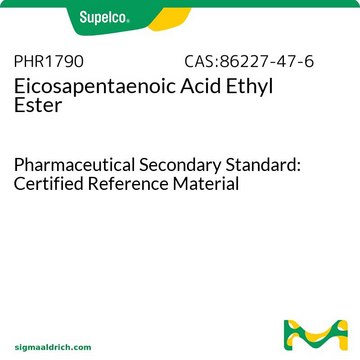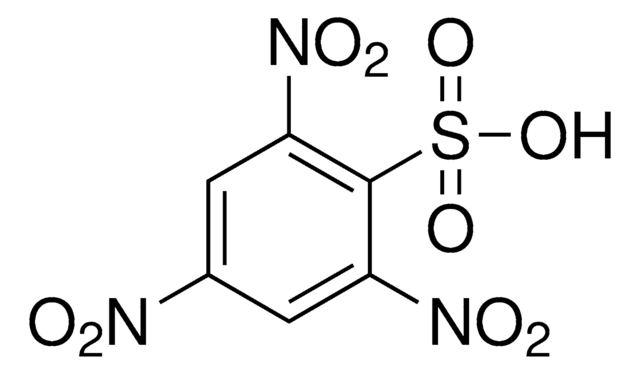T9900
Methyl tricosanoate
≥99.0% (GC)
Synonym(s):
Tricosanoic acid methyl ester
About This Item
Recommended Products
biological source
synthetic (organic)
Quality Level
Assay
≥99.0% (GC)
form
powder
technique(s)
gas chromatography (GC): suitable
color
white
mp
53-56 °C (lit.)
solubility
chloroform: 50 mg/mL, clear, colorless
application(s)
agriculture
general analytical
functional group
ester
lipid type
saturated FAs
shipped in
ambient
storage temp.
2-8°C
SMILES string
CCCCCCCCCCCCCCCCCCCCCCC(=O)OC
InChI
1S/C24H48O2/c1-3-4-5-6-7-8-9-10-11-12-13-14-15-16-17-18-19-20-21-22-23-24(25)26-2/h3-23H2,1-2H3
InChI key
VORKGRIRMPBCCZ-UHFFFAOYSA-N
Looking for similar products? Visit Product Comparison Guide
Related Categories
General description
Application
Features and Benefits
- High-quality molecule suitable for mulitple research applications
- Commonly employed in Metabolomics and Biochemical studies
Other Notes
Storage Class Code
11 - Combustible Solids
WGK
WGK 3
Flash Point(F)
235.4 °F - closed cup
Flash Point(C)
113.00 °C - closed cup
Choose from one of the most recent versions:
Already Own This Product?
Find documentation for the products that you have recently purchased in the Document Library.
Customers Also Viewed
Protocols
GC Analysis of a 37-Component FAME Mix on Omegawax® (15 m x 0.10 mm I.D., 0.10 μm), Fast GC Analysis
Our team of scientists has experience in all areas of research including Life Science, Material Science, Chemical Synthesis, Chromatography, Analytical and many others.
Contact Technical Service












